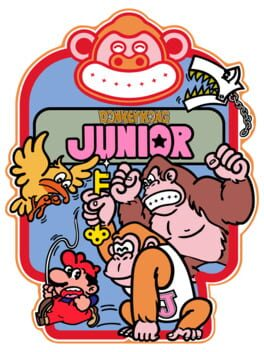subdirectory_arrow_right Donkey Kong (Game)
▲
2
▼
The development of the first Donkey Kong game was outsourced by Nintendo to Ikegami Tsushinki, a company who is believed but not confirmed to have previously worked with Nintendo on several of their early ventures into arcade games. They produced and sold to Nintendo somewhere between 8,000 and 20,000 printed circuit boards for Donkey Kong, and it is believed that Nintendo went on to copy an additional 80,000 boards from this batch without Ikegami's permission. Despite the sale, no formal contract was known to have been signed between the two companies, meaning Ikegami owned the source code to Donkey Kong as they had created it and never sent it over to Nintendo.
In order to create a sequel on the coattails of the success of the first game, Nintendo employed subcontractor Iwasaki Giken to reverse-engineer Donkey Kong so Nintendo’s staff could develop the game's sequel, Donkey Kong Jr. Should this narrative be verifiably true, this would make Donkey Kong Jr. Nintendo's first "in-house" video game created by themselves without any assistance from outside development companies. Ikegami viewed this use of the source code as blatant copyright infringement, and sued Nintendo in 1983 for ¥580,000,000 (around $91,935,800). A trial in 1990 ruled that Nintendo did not own the source code to the original Donkey Kong, and the parties settled out of court that year for an undisclosed amount.
In order to create a sequel on the coattails of the success of the first game, Nintendo employed subcontractor Iwasaki Giken to reverse-engineer Donkey Kong so Nintendo’s staff could develop the game's sequel, Donkey Kong Jr. Should this narrative be verifiably true, this would make Donkey Kong Jr. Nintendo's first "in-house" video game created by themselves without any assistance from outside development companies. Ikegami viewed this use of the source code as blatant copyright infringement, and sued Nintendo in 1983 for ¥580,000,000 (around $91,935,800). A trial in 1990 ruled that Nintendo did not own the source code to the original Donkey Kong, and the parties settled out of court that year for an undisclosed amount.
▲
1
▼
This game marks Mario's only appearance as the bad guy in a Nintendo game. Shigeru Miyamoto did this to show shades of grey in Mario and Donkey Kong, and also that not everything is as it seems.
Related Games
Mario Bros.
Donkey Kong
Donkey Kong
Crazy Kong
Green House
Donkey Kong 3: Dai Gyakushuu
Donkey Kong: Coconut Crackers
Super Donkey
Mario vs. Donkey Kong
Donkey Kong
Donkey Kong
Donkey Kong 3
Donkey Kong: Bananza
Donkey Kong no Ongaku Asobi
Donkey Kong: Original Edition
Donkey Kong Circus
Donkey Kong 3
Donkey Kong
Mario Bros.
Donkey Kong Plus
Donkey Kong Country
Mario Party Superstars
Mario Party 7
Super Smash Bros. for Nintendo 3DS
Super Smash Bros. Melee
Mario Superstar Baseball
Yoshi Touch & Go
Super Mario 64
New Super Mario Bros. 2
NES Remix 2
Yoshi's Island: Super Mario Advance 3
Waluigi's Foot Fault
Super Paper Mario
Mario Is Missing!
Mario Bros.
New Super Mario Bros. Wii
Mario Golf: World Tour
Game & Watch: Super Mario Bros.
Super Paper Mario
Donkey Konga 2
Game & Watch Gallery 4
Mario & Sonic at the Rio 2016 Olympic Games
Super Mario Bros. 35
Mario & Luigi: Bowser's Inside Story + Bowser Jr.'s Journey
NES Remix
Dr. Mario
Captain Rainbow
Super Mario 64 2
Mario Party DS
Donkey Kong Land
